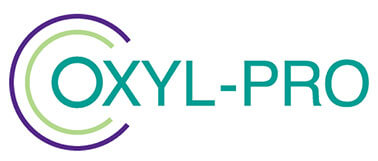The use of agricultural disinfectants is essential for preventing the outbreak of diseases and infections on farms.
There are two key aspects to this: applying a systematic, methodical and rigorous cleaning programme; and selecting the right agricultural disinfectant for the specific task.
This specificity is important. While many commercially-available disinfectants are multipurpose, one single type may not meet all your decontamination requirements.
What, therefore, do you need from an agricultural disinfectant?
What types of agricultural disinfectant are there?
There is a broad range of disinfectants available, and DEFRA produces a list of approved disinfectants for agricultural use.
Broadly, agricultural disinfectants include the following classes of chemicals and substances:
- Quaternary ammonium salts
- Chlorine bleach
- Chlorhexidine
- Phenols
- Iodine
- Trisodium phosphates
- Hydrogen peroxides
Some chemical compounds work more effectively than others, and another factor will be the different conditions and requirements of particular types of livestock.
What should your disinfectant do?
The ideal agricultural disinfectant should have as wide a spectrum of activity as possible. You may be targeting specific pathogens, but there are likely to be others you are not aware of.
Therefore, the disinfectant you choose should be effective against bacteria, viruses and fungi. Certain pathogens may require specialist, dedicated products.
You want your disinfectant to be fast-acting. The best application is a foam, as this prolongs contact, and allows you to see where you have applied it.
Look for a disinfectant that is versatile, so that it serves several biosecurity functions, such as surface and transport disinfection and water sanitation.
The disinfectant should remain effective across a wide range of temperatures. It is worth noting that some disinfectants have reduced activity in conditions that are close to or below freezing.
An agricultural disinfectant should not leave behind harmful residues, and should be safe for contact with livestock and humans.
Please also note: the disinfectant you choose should have official Government approval for use against animal diseases.
Is your disinfectant compatible with your cleaning?
Disinfection alone will not keep your farm clean, or protect your livestock.
It needs to work in conjunction with regular cleaning. Consequently, you must consider whether the disinfectant you use is compatible with your other cleaning products.
Products that have a high pH, that are alkaline-based, will work better with ammonium compounds than acidic cleaners that have a low pH.
Some degreasers, for instance, are low pH.
When applying a disinfectant, you should always make sure you thoroughly rinse down all cleaned surfaces to minimise any compatibility issues.
What is your cleaning and disinfection process?
Good disinfection goes hand in hand with good cleaning. It is critical that you thoroughly wash the areas and surfaces you are disinfecting, removing any organic matter such as manure.
An effective detergent will help enormously with the cleaning process, speeding it up and creating a firm foundation for your cleaning and disinfection programme. It will aid in the destruction of pathogens.
Preparation using a degreaser will also reduce surface tension and promote the penetrability of the water.
You want the detergent to work rapidly, with a short contact period of around 20 minutes.
Make sure the cleaning agent you use will not cause damage or corrosion to surfaces.
It should also leave no residue, which could harbour microorganisms.
Once you have cleaned, you can apply the disinfectant.
What are the elements of effective disinfection?
A key challenge to effective disinfection comes with disinfecting surfaces, since they can be uneven, wooden or porous.
Again, the pre-disinfection cleaning process is critical, as removing any residue of manure will reduce the pathogen load prior to applying disinfectant.
Certain disinfectants will perform better on organic and porous services.
Effective disinfection is about the procedure as well as the choice of disinfectant:
- Clean and disinfect water troughs regularly
- Protect all water sources from manure and animal carcasses
- Clean and disinfect farm equipment regularly
- Sanitise nursing bottles and buckets after each feed
- Clean then disinfect the walls and floors of pens after use
- Remove all bedding and sidewalls and gates of pens before disinfection and clean them thoroughly.
How effective is your agricultural disinfectant?
Depending on the type of operation you have, and the livestock you are farming, you will have different disinfectant requirements.
For some pathogens, you may require a very specific decontamination treatment, but for other forms of good disinfection, it is important to choose a disinfectant that will be as widely effective as possible.
Oxyl-Pro is a hydrogen peroxide-based disinfectant which covers a broad variety of purposes.
It uses only aseptic grade hydrogen peroxide, with a food-safe stabiliser that makes it suitable for drinking water systems as well as a host of other, non-hazardous applications.
Used as an agricultural disinfectant, Oxyl-Pro will disinfect:
- Livestock water
- Air and surfaces
- Equipment and machinery
And it will oxygenate compact soils.
There is a range of Oxyl-Pro disinfectant products, including a specially formulated disinfectant for use against foot and mouth disease.
Besides you choice of disinfectant, the other crucial aspect of agricultural disinfection is to ensure that you carry out these processes and procedures regularly and routinely.
Common diseases, conditions and infections pose a continual threat to the wellbeing of livestock, and the productivity and profitability of farms.
Disinfection has a central part to play in protecting livestock and farm businesses.
For more information about the Oxyl-Pro product range, please complete our contact form, call us on +44 1606 851 782, or email [email protected]

